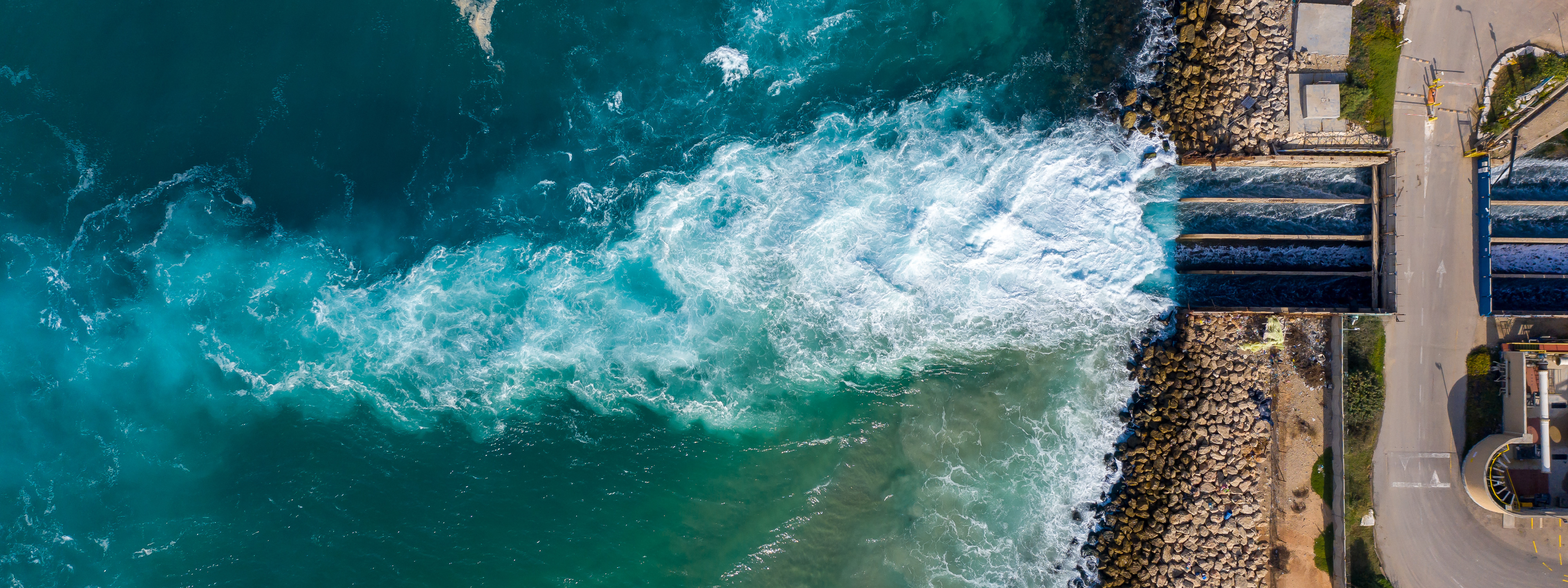
Latin America is at a pivotal moment in its water infrastructure development. Historically hindered by limited public funding and rigid policies, investment in sanitation, wastewater treatment, and desalination is now gaining momentum due to population growth, climate pressures, and rising industrial demand. Chile, Peru, Brazil, and Mexico are at the forefront of this shift, each driven by unique socio-economic needs.
Chile
Chile currently has 24 operational desalination plants with more than 10,500 l/s capacity, four under construction, and 11 more in the environmental approval process. An additional 11 projects are under evaluation.
Chile’s mining industry relies heavily on water resources and, while many of its desalination plants exclusively supply the mining industry, future initiatives will have diversified offtakers. While a significant portion of the projects are centered around the needs of Chile’s mining sector, the future pipeline of projects will also serve other purposes. Out of the 22 projects that have received, or are pending approval, five will supply water for mining, five to green hydrogen (two of which include reverse osmosis operations), three to drinking water, and two to industrial use.
Desalination and water supply are key areas for long-term investment in Chile, with significant growth expected in the next decade.
Peru
Peru has a diverse portfolio of water infrastructure projects. Several desalination and water treatment plants are currently operational, with additional projects under construction—most notably in Caravelí (a province in southern Peru), where a new facility is being developed to improve access to drinking water.
Of the nine projects undergoing feasibility studies, most are being developed for potable water production and wastewater treatment. At the 2024 Latam Water Summit, Peru’s Private Investment Promotion Agency (Proinversión) announced a water and sanitation PPP portfolio with an estimated investment of US$1.3 billion. The agency has three desalination projects in the pipeline, including one that is expected to be combined with a wastewater treatment plant. Tender documents are under preparation for two of these projects.
However, water projects are also being developed to support Peru’s mining industry. The Tia Maria copper project on Peru’s southern coast is developing a reverse osmosis desalination plant, which will provide 235 l/s of desalinated water needed for its mining operations.
Peru’s focus on water treatment in 2025 is exemplified by the remodeling of the wastewater treatment plant in Cajamarca, in the eastern region of the country. The concession will also include the construction of a new wastewater treatment plant to reuse water for irrigation. Meanwhile, in Lambayque, the ongoing Olmos project—which consists of a hydro plant and an irrigation system—is undergoing expansion. The project is currently at the engineering stage and aims to increase capacity at the hydro plant and add a new water transportation tunnel to enhance efficiency.
Mexico
Mexico faces severe water scarcity due to droughts, air pollution, and structural challenges, particularly in northern states like Chihuahua, Sonora, Sinaloa, and Baja California. Financial constraints have further hampered efforts to address the crisis.
To tackle this growing crisis, the Comisión Nacional de Agua recently held 13 forums nationwide, bringing together private and public sector stakeholders to discuss solutions. These discussions aim to promote sustainability, equity, and transparency in water management and will inform a new General Law of Water and potential amendments to the existing Law of National Waters.
In April 2025, the government also announced a US$1.5 billion investment for 37 water infrastructure projects, focusing on irrigation, hydro agriculture, and potable water improvements. Key projects include a desalination plant in Rosarito, Baja California, and aqueducts in Colima and Veracruz.
Brazil
In Brazil, the private sector has been enlisted to address underinvestment in potable water and sanitation infrastructure. Following the enactment of legislation in 2020 mandating that 99% of the population must have access to drinking water and 92% to sanitation by 2033, the number of municipalities served by private concessionaires has quadrupled.
This surge in private sector investment was primarily achieved by tackling two major issues common to Latin America: political and regulatory fragmentation, and system fragmentation. While local governments deliver water and sewage services, the new legal framework introduces federally standardized guidelines, requiring state and local adoption to access federal funds. Furthermore, small municipalities must now organize into “blocks” to provide water services more efficiently.
Despite significant regulatory progress, challenges remain. High interest rates and financing costs have slowed private investment, hindering the sector’s growth and jeopardizing the 2033 universalization goals. However, for investors who can navigate the financial landscape and establish resilient, long-term partnerships, Brazil offers a substantial opportunity to engage in one of the region’s largest and most ambitious water infrastructure programs.
Other Trends
Similar to other drought-prone regions, water scarcity is a prominent driving factor for water investment throughout Latin America, attracting the attention of regional governments who are increasingly using large-scale tenders and concessions to not only address environmental pressures, but also support agricultural productivity, urban health and economic resilience. In Chile, for example, the government is currently tendering the concession for the La Punilla dam, a major US$342 million project aimed at expanding irrigation systems in neighboring, water-stressed communities. Similarly, Peru plans to tender a new water treatment plant in 2025, responding to growing demand for safe and reliable water access. Furthermore, in Paraguay, a US$350 million project is underway near Asunción, constructing a water treatment plant and sewage networks to address pollution in the area.
Emerging sectors like green hydrogen are also becoming key drivers of desalination investment in the region, further reinforcing water infrastructure as a strategic priority across Latin America.
There is undoubtedly a growing demand for water projects in Latin America. As major economies in the region continue to grow rapidly and given the significance of water-intensive industries such as mining to economic prosperity, we anticipate the development of numerous water infrastructure projects in the coming years. While investors will need to navigate the unique legal, political, and geographical landscapes of Latin America, we believe the region is now prepared to make the necessary commitments to foster long-term investment in the water sector.
White & Case means the international legal practice comprising White & Case LLP, a New York State registered limited liability partnership, White & Case LLP, a limited liability partnership incorporated under English law and all other affiliated partnerships, companies and entities.
This article is prepared for the general information of interested persons. It is not, and does not attempt to be, comprehensive in nature. Due to the general nature of its content, it should not be regarded as legal advice.
© 2025 White & Case LLP




